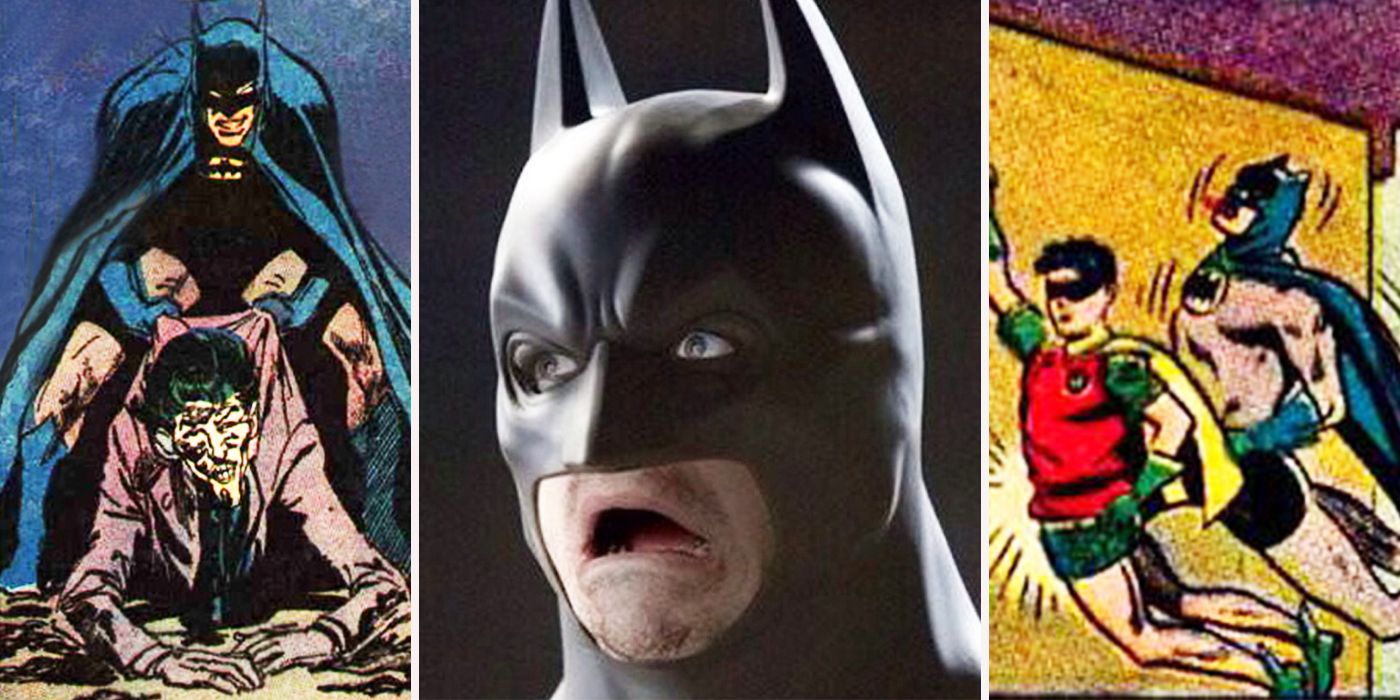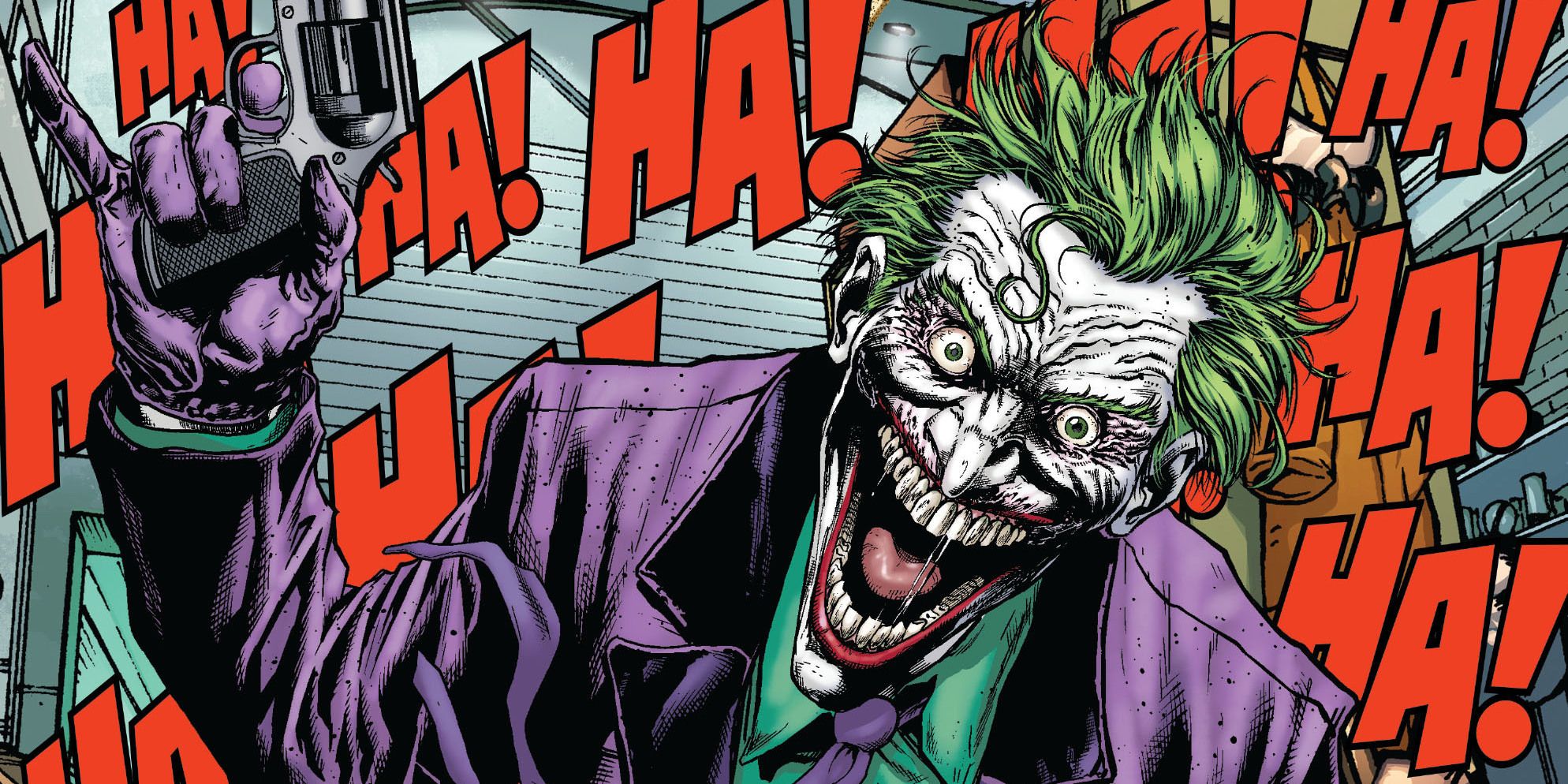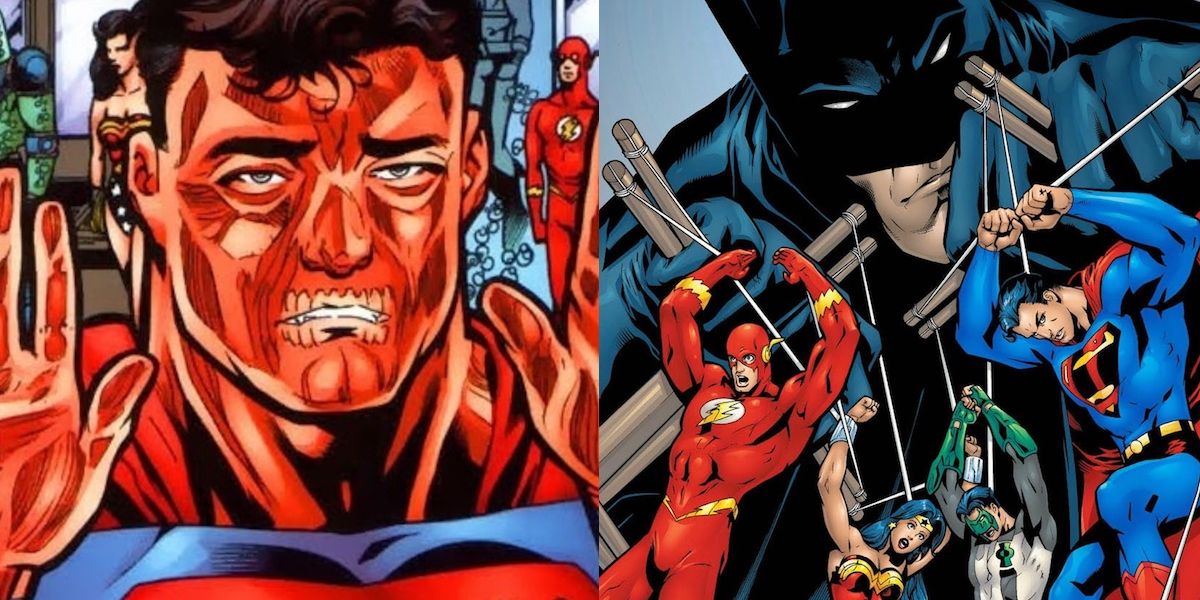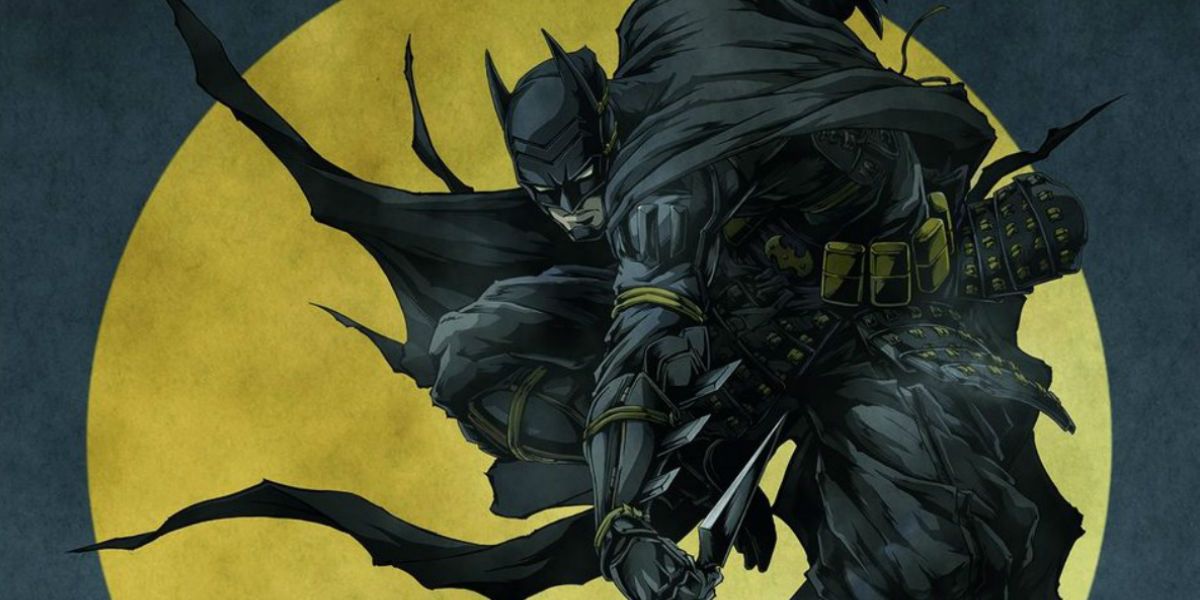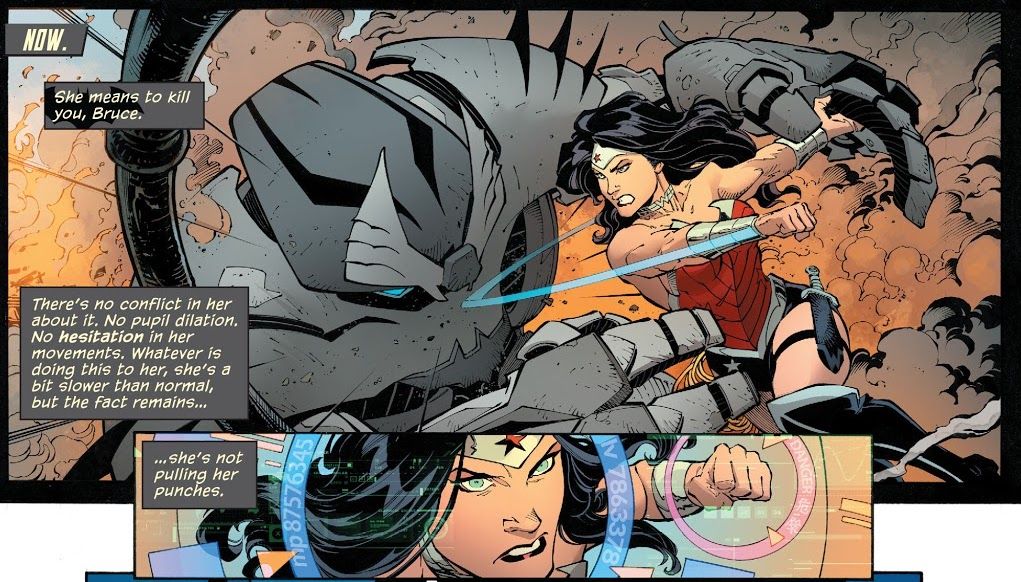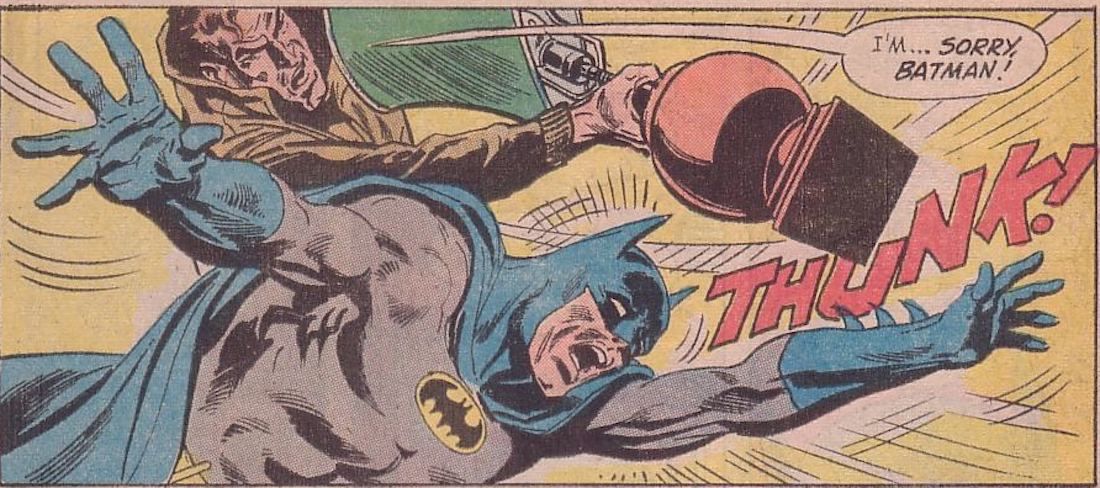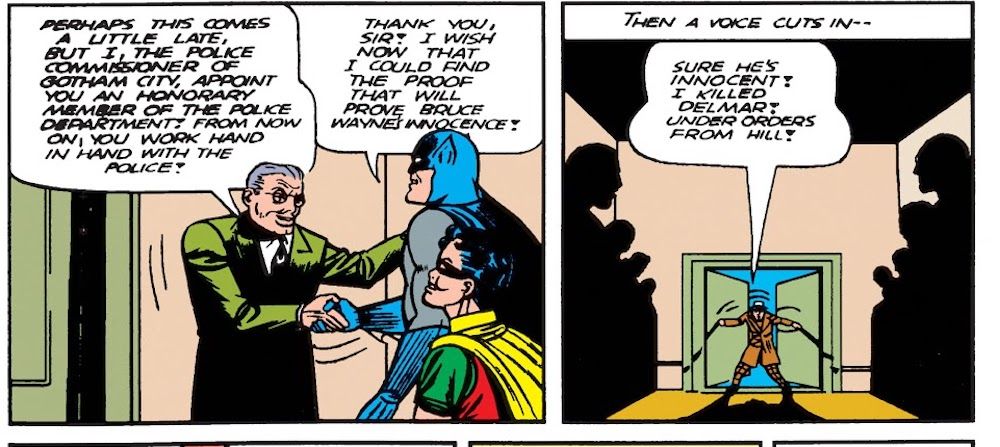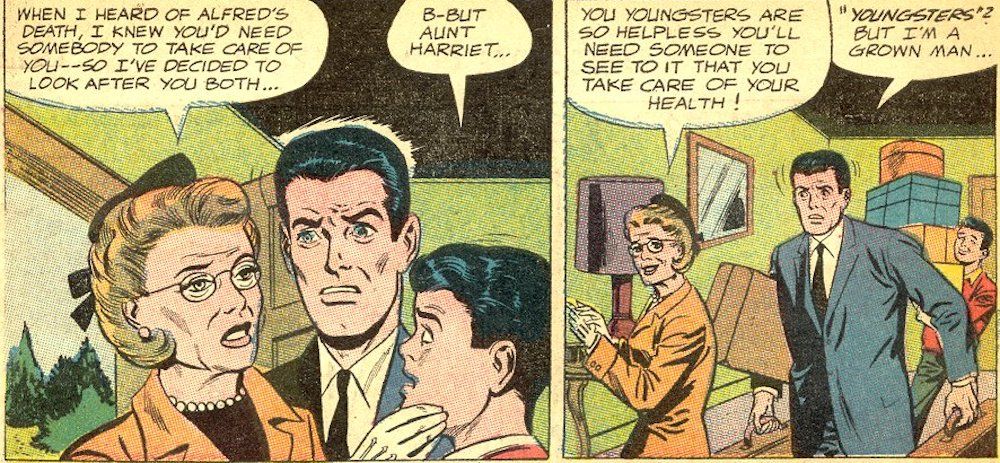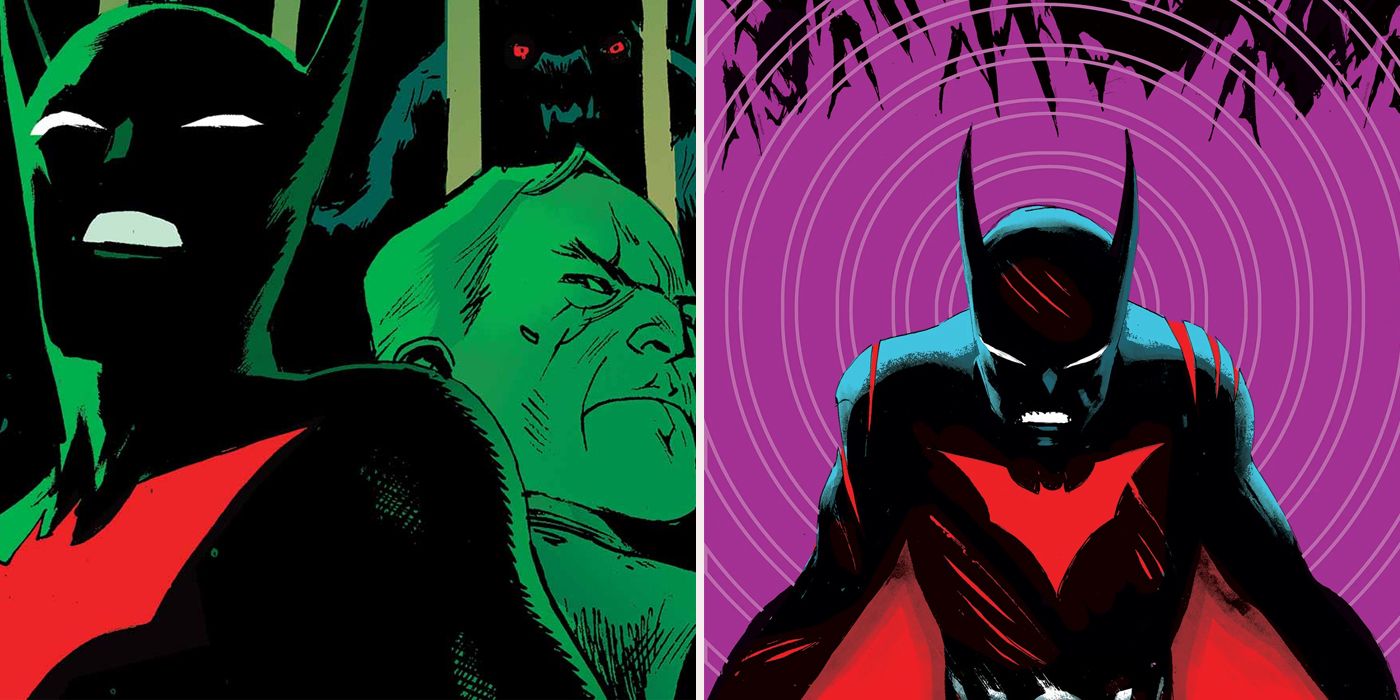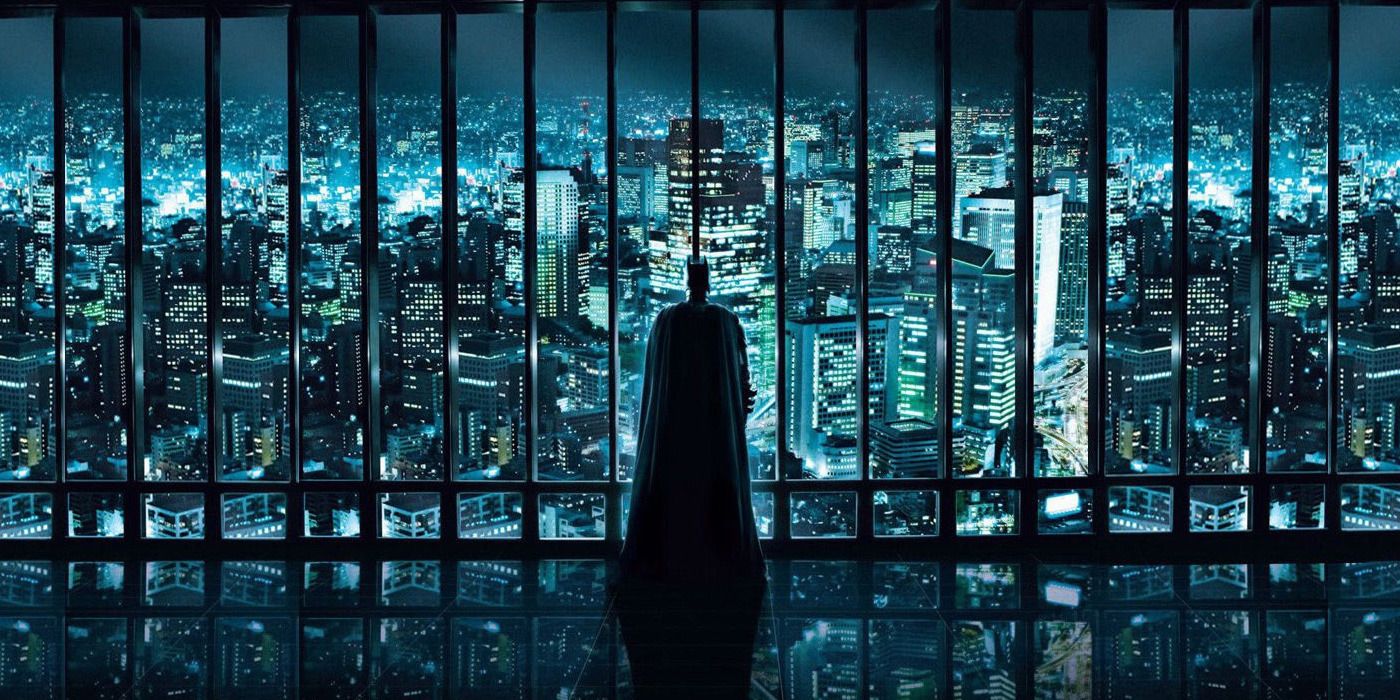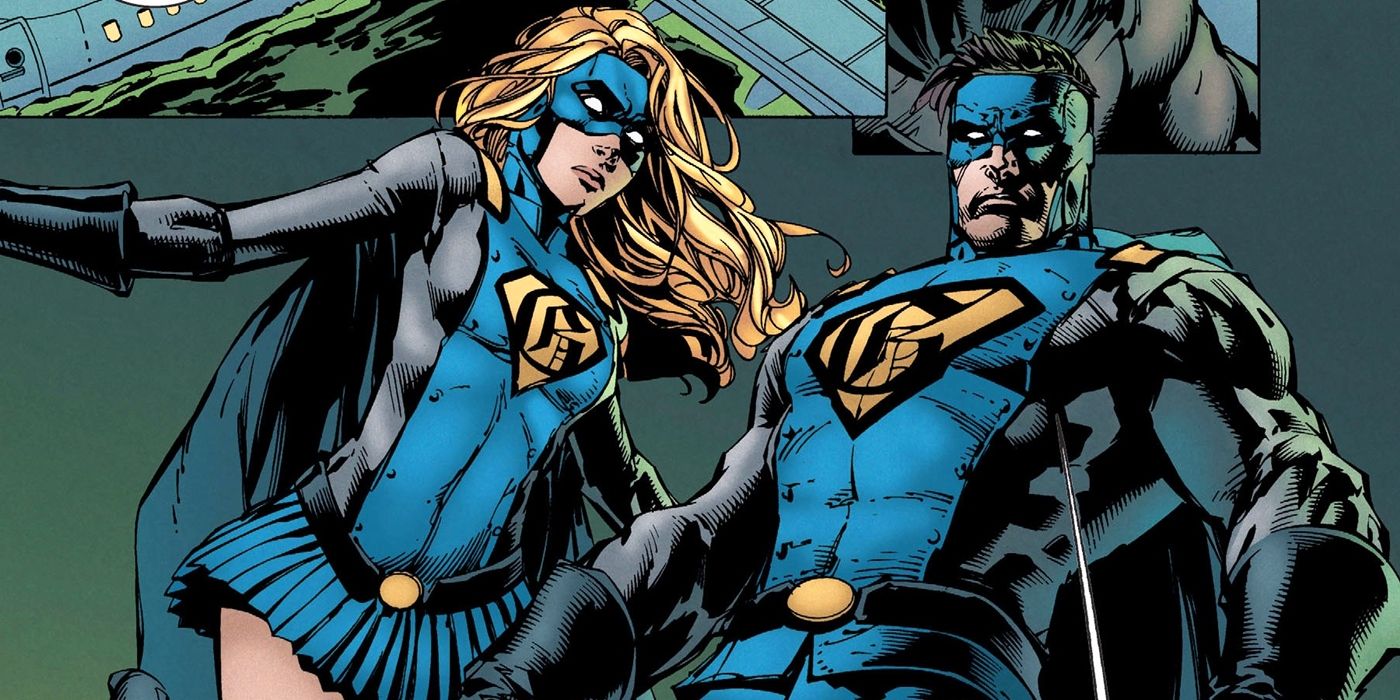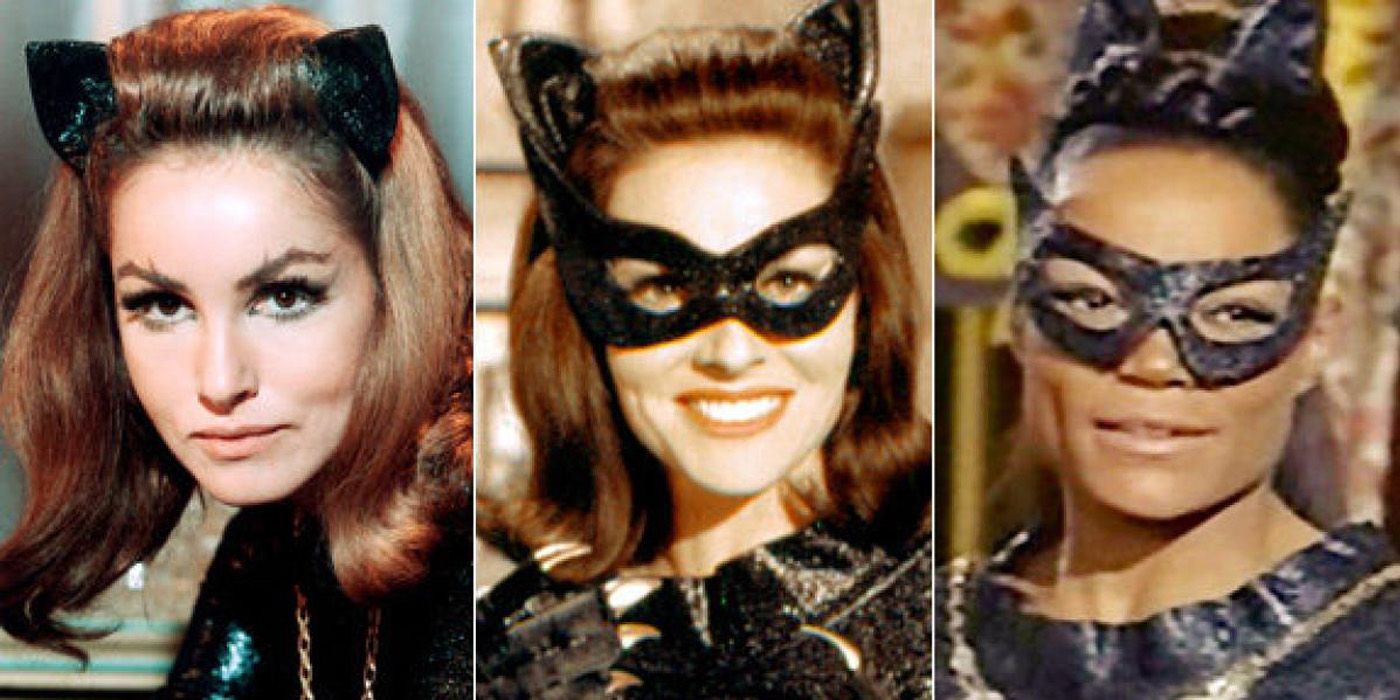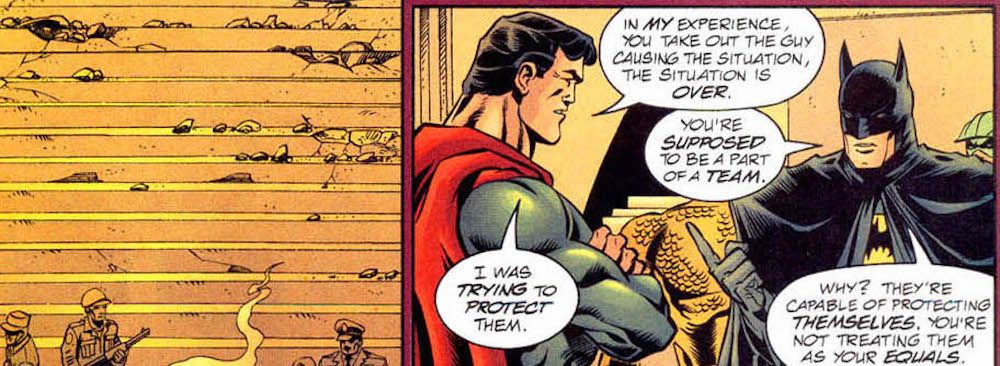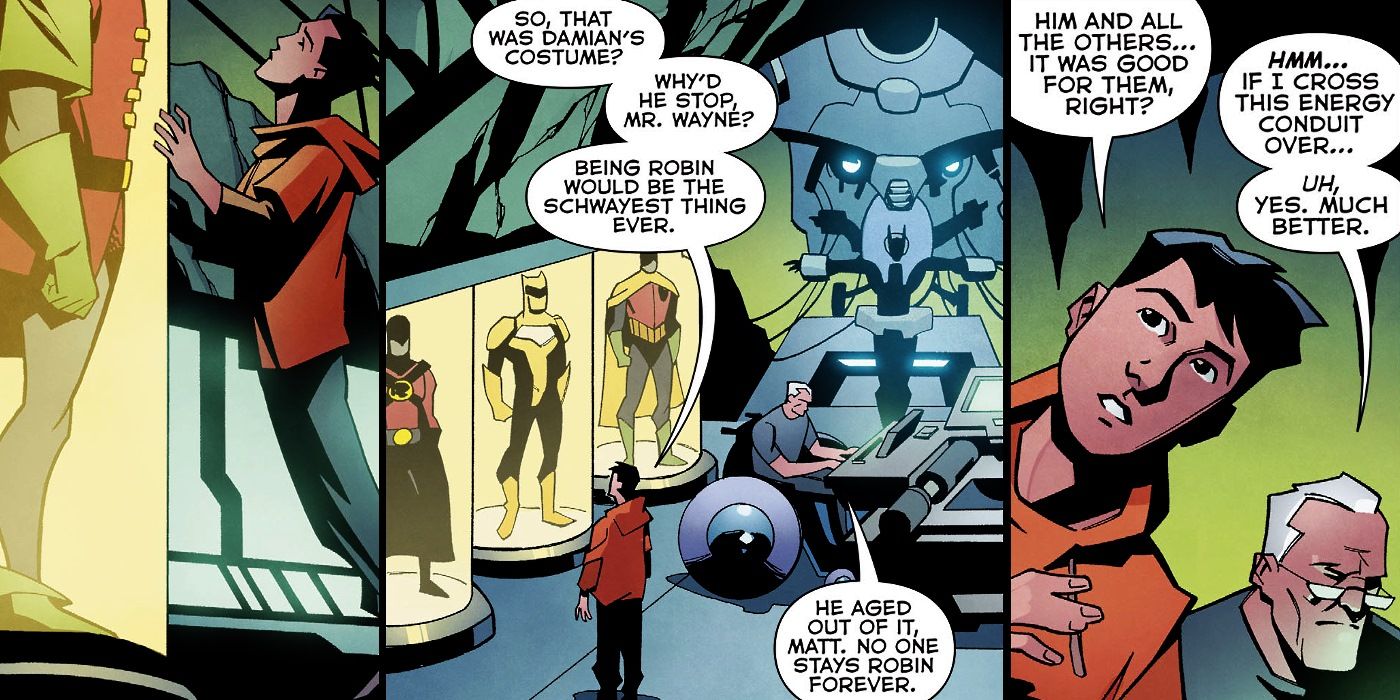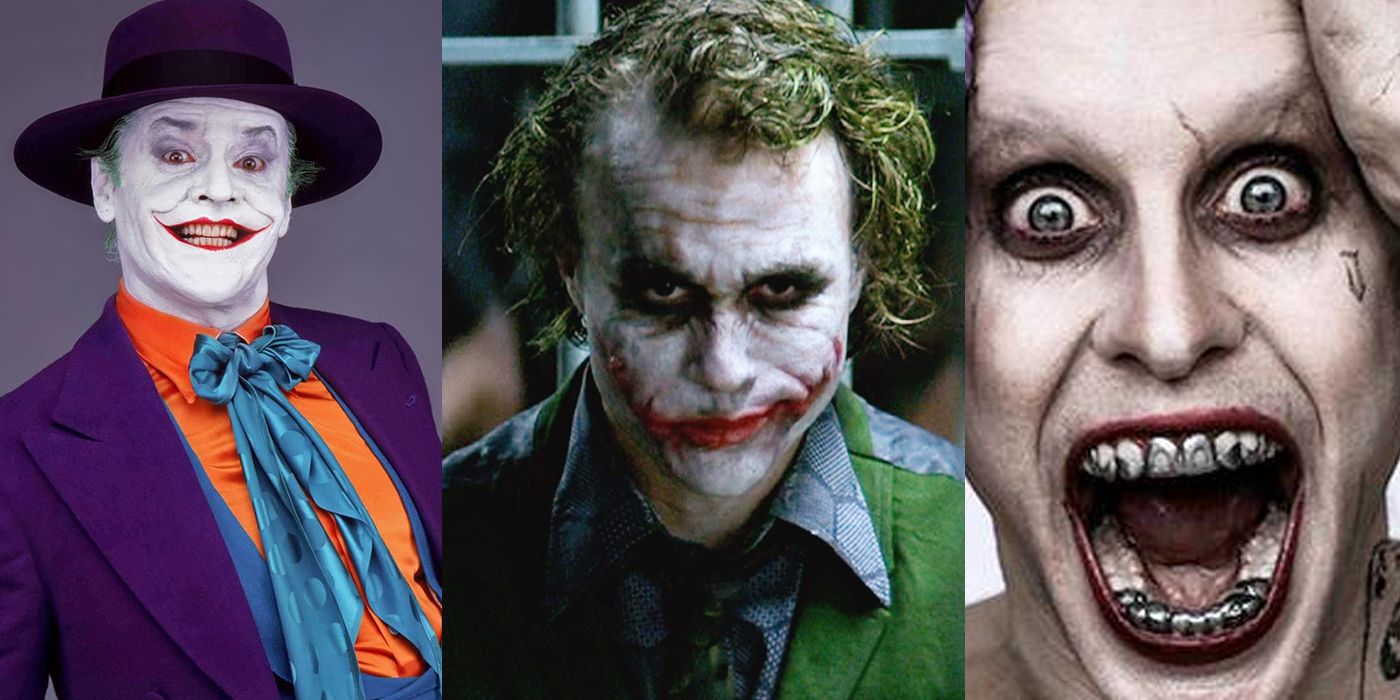There are lots of ways Batman doesn’t make sense, but a lot of that isn’t his fault.
In the real world, anyone who’d taken as many blows to the head as Batman has would be too brain-damaged to tie his shoes, let alone be the world’s greatest detective. But fictional heroes have been shrugging off the effects of knockout blows for longer than the Caped Crusader’s been around. He's stuck in that tradition.
Batman's also stuck in a superhero universe, and as Astro City writer Kurt Busiek says, those don't make sense at all. Despite all the superscience and magic in the MU and DCU, despite the gods, demons, and ETs interfering in human affairs, despite the recurring apocalypses, life still looks just like our own Earth. Busiek suggests that’s part of comics’ appeal: it’s more fun to imagine Batman and Superman coexisting with us than living in a realistic but unfamiliar world.
Other logic problems, however, crop up because writers are looking for a new twist or slant on the Dark Knight and come up with a bad idea. Other problems are because reality’s just too inconvenient. In the real world, the Joker would probably be dead (#15, #1), but then Batman wouldn’t have a Joker to fight.
Whatever the reasons, here are 15 Things About Batman That Make No Sense.
The Joker can’t be executed because he’s legally insane
Jason Voorhees and Ted Bundy combined couldn’t match the Joker’s accummulated body count. The reason he can kill — and kill — and kill again with impunity is because he’s legally insane and not responsible for his actions. All Gotham City can do is lock him up in Arkham.
The insanity defense, however, doesn’t work like that. To escape execution, the Joker would have to be incapable of understanding things like “pumping someone full of Joker venom will kill them” or of knowing the difference between right and wrong. The Joker knows the difference, he just doesn’t care. And when he kills, he knows perfectly well what he’s doing. For the purposes of charging, convicting, and executing him, the law would consider him sane.
It’s possible the law is radically different in the DCU but to date Batman stories don’t demonstrate that.
Other superheroes trust Batman
In the 20th century, trusting Batman was like trusting Superman. Bats was a hero, a friend, a teammate, someone you knew had your back in a tight spot.
The 21st century Batman, by contrast, is whack-job whose total lack of judgment and refusal to trust repeatedly puts his friends and the world at risk. Batman covertly built Brother Eye, a surveillance satellite AI that turned hundreds of innocent people into killer OMAC monsters. He developed protocols for taking down the rest of the Justice League, which Ra's al Ghul stole and used.
These are the kind of insane mad-scientist projects that get most characters classed as villains, but because Batman can’t be a villain, the other heroes grumble for a while, then say “Bygones.”
Batman is a shadowy urban legend nobody knows exists
In the constant struggle to keep Batman a spooky, chilling figure, “Batman is an urban legend” was a misstep.
The premise is that Batman stays enough out of the public eye that nobody in Gotham is sure he exists (with obvious exceptions like James Gordon). It doesn’t seem impossible that, even if Gotham City is studded with surveillance cameras, the Bat would find a way to avoid them. Still, who do people imagine turns over all those crooks to the cops? Do Gothamites imagine the Joker and Two-Face just punch themselves unconscious and tie themselves up?
Plus Batman also works with the Justice League. Most stories show him doing it quite openly and the JLA is a high-profile group. Ducking surveillance cameras won’t help. One letter column conceded the “urban legend” makes no sense, but asked readers just to roll with it.
He uses powerful weapons against the Justice League instead of criminals
In the Endgame arc, the Joker turns the Justice League against Batman. Superman, Wonder Woman, the Martian Manhunter, Green Lantern — can even the Caped Crusader stop them all?
Not to worryL it turns out Bats has a special battlesuit that can take down the entire team. It can withstand Superman’s powers, track Flash’s speed, and zap Wonder Woman with magic. So… if Batman has this kind of firepower, why does he fight crime with nothing but his regular bat-suit and batarangs?
Endgame writer Scott Snyder tries making the reason personal — Batman doesn’t want to be invincible — but it’s hard to believe the guy who built Brother Eye to fight crime wouldn’t use magic or super-armor if he had the option. Snyder sacrificed character logic for the sake of a spectacular fight scene.
Batman gets clobbered by bush-league thugs
In the years since Batman crushed Superman in Dark Knight Returns, he’s become less a Bat-man and more of an invincible Bat-god. The reaction to Batman taking down a half-dozen white Martians now isn’t “Wow, pretty impressive for a guy with no super powers” but “Only six? Are you feeling well?”
The Batman of the Bronze Age and earlier seems a completely different character. He’s the best at what he does, but he’s very obviously “best human” rather than “best beyond metahuman.” In the Golden Age, two or three thugs working together could take him down. In the Bronze Age, one nobody with a lucky blow can still knock the Bat cold.
Just as Superman’s powers have steadily amped upwards, so have Batman’s skills. At this point either of them looking at their past selves would probably laugh and say “Wimp!”
He’s a vigilante... and he's also a police officer
Like most superheroes, Batman has an edge over the cops: as a vigilante he’s not bound by the same rules. The Gotham PD has to worry about warrants, unreasonable force, and Miranda rights; if Batman finds the evidence with an illegal search and drops it off with Harvey Bullock, problem solved!
Except it isn’t. Commissioner Gordon made Batman an honorary cop back in the 1940s, and that stayed true for at least 30 years. That’s not something Bat’s can turn on and off (“Based on the evidence I turned up as a vigilante, I’m now arresting you as a policeman.”).
Even if he wasn't official, Batman works so closely with the police — responding to the Bat-signal, sharing information with Gordon — a defense attorney could claim he’s acting as their agent. Unless the law is different in the DCU, most of his collars would walk.
Aunt Harriet
Aunt Harriet is best remembered from the Batman TV show, but she actually showed up first in the comics. After Alfred died temporarily, Dick’s aunt moved into Wayne Manor to take care of poor, helpless Dick and Bruce.
Superheroes often have relatives materialize out of the blue, but this makes no sense. As Aunt Harriet clearly loves Dick, where has she been all his life? Why didn't she show up when he was orphaned? And how could she have known Bruce long enough to think of him as a "youngster?"
The real reason was the editor’s attempt to dispel the “Batman and Robin are gay” meme of the time. Adding a woman to Wayne Manor was supposed to squelch any romantic vibe. Given Harriet showed up once in a blue moon, it’s unlikely that worked.
Batman Beyond
In the 1999 - 2001 Batman Beyond cartoon, 21st century teen Terry McGinnis uses a high-tech Batsuit to become the new Batman, with mentoring from a snarky, aged Bruce. A few years later, Justice League Unlimited revealed Terry was literally born to be Batman.
Knowing that Bruce would inevitably age, Amanda Waller took a radical step to provide a replacement Batman: she used a sample of Bruce's DNA to make Terry, genetically, Bruce Wayne's son. She planned to have his parents murdered to ensure he'd become a new Batman, but backed off. Nevertheless, Terry's father wound up murdered later. Attempting to deal with the tragedy, Terry, by random luck, became Batman anyway.
It was a dramatic finish to Batman Beyond, but it's still an implausible one.
How does the Batmobile ever make it through Gotham traffic?
Tick-creator Ben Edlund said in one interview that he likes parodying Batman because Batman always struck him as ridiculous — how could anyone drive all the way from stately Wayne Manor into downtown Gotham City and arrive in time to stop any crimes?
Good point. Gotham City presumably has the same insane traffic as New York, but the Batmobile never faces trouble navigating traffic jams. In Batman Begins, it was simple — the Batmobile is a tank and Bruce has no qualms about smashing through obstacles. In the comics he's less destructive and most Batmobile models aren't that unstoppable.
While some nonsensical Bat-details are common to all superheroes, this one’s almost unique. After all, how many other heroes rely on a car to get around? But the Batmobile’s so iconic, it's probably better he ignore the implausibility than give it up and have Bruce start dialing Lyft.
Batman belongs to several superhero teams, but hates them helping him
Even the darker, grimmer, post-Frank Miller Batman is a team player. He works with Superman, despite constantly muttering he doesn't trust him. They’re the “trinity” with Wonder Woman. Bats is on the Justice League, he founded Batman Inc., and he created the Outsiders.
Yet at the same time, he doesn’t want any of them fighting crime in Gotham City without his permission. Any time a superhero shows up in Gotham, Bats reacts like they’re teenagers treading on his lawn. They’re not welcome. Whatever they’re in town to do, it’s wrong.
It makes so little sense that it seems like a running gag - only it’s serious, meant to show what a brooding loner/control freak the Bat is, never mind that he teams up with other heroes on a regular basis.
Then he trusts random new Gotham heroes instantly
When new superheroes Gotham and Gotham Girl appear in the city, everything is suddenly different. Instead of the hostility Batman shows heroes he’s worked with for years, these two bypass all his suspicions. Instead of distrust, he’s thrilled to have more superheroes in town to help him serve and protect.
If that’s a sign DC’s moving beyond Brooding Loner Batman, then great, but as written, it comes off more like a set-up for what follows. No sooner does Batman welcome them into his heart than Gotham gets killed and Gotham Girl has a mental breakdown. The angst! The drama! The phoniness of it all!
It’s like having Batman fall in love so that the woman can be fridged two issues later and give him even more suffering. Because Batman totally needs more of that to make him interesting.
Why does he hook up with so many female supervillains?
A perennial problem with comics is that if an idea works once, writers will try it again. And again. And again. Case in point, Batman hooking up with female supervillains.
When it happened with Catwoman in the Golden Age, it was memorable. And it contrasted with Bruce’s good-girl relationships at the time (Linda Page, Julie Madison). When he fell hard for Talia al Ghul it was more of a stretch — she’s a lot less redeemable than Selina Kyle — but not absurd.
But since then Bruce has had multiple relationships with other bad girls, or good girls who turned bad after bedding him. Does he really do all his thinking with his little head? Or is it that after losing his parents Bruce is afraid to love — unless it's someone he can't really have.
He's somehow a brilliant leader
Despite his bad, bad judgment calls, the JLA still trusts Batman. They even let him handle strategy and tactics, but it's hard to believe he's any good at them.
All those years Batman honed his tactical skills, he was honing to be a solo act. He didn’t imagine himself leading a team or planning team battle tactics. It’s one thing to adjust his methods to include Robin, but JLA tactician would hardly fit his skill set.
Nevertheless, in JLA: Incarnations, (for one example), Batman discovers the Leaguers are a disorganized rabble with no idea how to fight effectively. But by virtue of being the Batman, he instantly grasps how to lead them in combat. Given his distrust and lone-wolf issues, it’s more likely he’d ignore teamwork and screw everything up. Which come to think of it, he did - multiple times.
Batman has multiple Robins, Bruce Wayne has multiple sons, and nobody notices?
Bruce Wayne becoming Dick’s guardian just when Batman adopted Robin must have looked a little suspicious to anyone trying to unmask the Dynamic Duo. Still, there were other millionaires with sons of the right age (they’ve turned up in different stories over the years), so it was hardly conclusive.
Then Dick went off to college and Robin stopped working with Batman... but hey, the other millionaire's sons probably left for college too! But then Bruce became guardian to Jason Todd and Batman took on a new Robin. And a few years later, after Tim Drake became Robin, Bruce adopted Tim Drake. And then he took Damien into his house and got another new Robin.
By this time it’s pretty hard not to see a pattern, qhich makes it remarkable nobody ever does so.
No cop ever killed the Joker “trying to escape”
It’s understandable, somewhat, that Batman doesn’t kill the Joker. As Superman once said, Bruce doesn’t want people to die, let alone kill them himself.
But what about the Gotham City cops? Legally they can’t do a single thing to the Joker, but would that stop them? The Joker, after all, attempted to murder all the babies in Gotham City. He murdered Police Commissioner Sarah Gordon, and if there’s one thing cops hate, it’s a cop-killer. And every cop knows the Joker’s going to keep killing as long as he draws breath.
In the real world the Joker would have been shot “accidentally” years ago. Or "shot trying to escape." Or he’d just turn up dead in his cell one morning. What’s the downside? Even if the truth came out, the killer would probably get a medal. But that would leave Batman without a Joker, and that just won't happen.
---
Any oddities we missed? Any explanations why we're wrong and Batman's completely consistent? Leave a comment!

